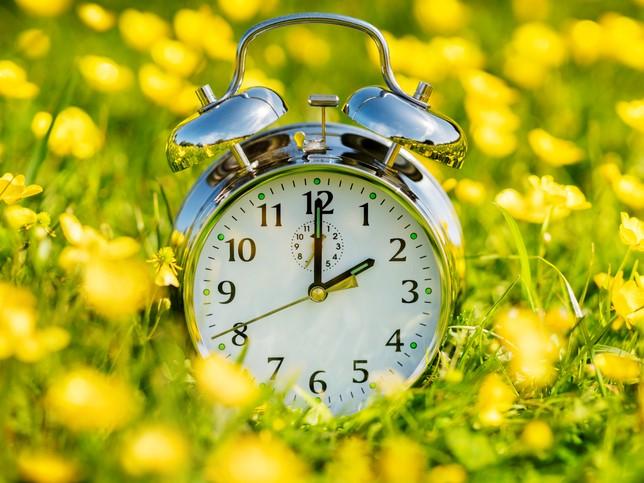
Five ways to beat the procrastination monster

For me, writing and procrastination have always gone hand in hand. In fact, I’m pretty sure that if there were awards for “excellence in the field of procrastination”, I would have a shelf full of trophies – and I’d take great pleasure in polishing them to distract me from my latest writing project.
Right now, I’m writing this article about beating the dreaded “P” word, but it took a fair amount of effort to shake off my plethora of delaying tactics to sit down and start typing. Please note, however, that I’m simply detailing what works for me; I’m not suggesting a one-size-fits-all panacea for every fellow procrastinator. I hope these techniques do help you, but don’t waste valuable writing time moaning at me if they don’t.
1. The ‘perfect conditions’ trap
One of the things that continues to trip me up is the search for the ideal writing set-up. Whether it’s the right place, the right notebook, the right pen, the right lighting, the right coffee (more on this later) – you name it, I’ve searched for it. And guess what? I’ve never achieved it. I’ve spent so much time in the past trying that I could have written an entire book had I just accepted that there is no ideal when it comes to putting pen to paper or hands to keyboard. Because there really isn’t. And searching for it is just another time-sapping exercise that we need to stamp out.
2. The coffee conundrum
To caffeinate or not to caffeinate? Although millions of us lean on coffee when writing, caffeine might not be as useful as we think for the creative process, with Darya Zabelina, of the University of Arkansas, and Paul Silvia, of the University of North Carolina at Greensboro, observing that “consuming 200mg of caffeine…significantly enhanced convergent problem-solving ability, [but] had no effect on divergent [creative] thinking or working memory”. So, if we’re working on something that requires the analytical side of our brains, then maybe we should put the percolator on. But if we’re trying to write creatively, it might not have the impact we’re seeking (meaning that those jitters and toilet trips are even less welcome).
3. Body doubling
This semester I booked a classroom for two hours every Monday afternoon for creative writing students (and me) to write. We did this together but individually. And the point of this? Body doubling, a term that has emerged in relation to the self-management of attention deficit disorder. Put simply, it is defined as “doing a task in the presence of another person [where] they may work on the same task, but independently, such as when friends do homework together”. In our case, then, it involves a group of people sitting together in the same room, during a defined time, where each is encouraged to focus on getting those words down because everyone else is.
- Resource collection: advice for surviving your PhD dissertation
- What is your academic writing temperament?
- Enhancing manuscript clarity and ethical credibility with ChatGPT
- How to teach creative writing even if you’ve never done any yourself
This might work for several reasons, but the Attention Deficit Disorder Association (ADDA) suggests the main factors could be that “the distracted individual feels more focused by the presence of another person in their space […and] feels responsible to and for the body double”. It’s certainly worked for me; the thought of being tutted at by my students for getting out my phone and doomscrolling is incentive enough to knuckle down.
4. Write in a different place
I’ve mentioned that an ideal location to write in probably doesn’t exist, but even if we have found that preferred spot, it doesn’t mean we always have to write in it. One of my go-to methods for overcoming periods of procrastination is to change writing location. This can be something as simple as moving a metre across the room (I shift from my usual desk to the “family” desk or take my laptop down to the dinner table for a bit). A lot of research shows how location can affect our mental health, with people who “visited more locations throughout the day reporting more positive feelings, such as, ‘happy’, ‘excited’, ‘strong’, ‘relaxed’ and ‘attentive’”, so it’s not surprising that changing up our writing environments can help with our creativity, too. If I’m really struggling to focus or come up with ideas, I change not only the location but also the method I use to write, switching laptop for pen and paper to connect more physically with the ideas.
5. Collaborating or talking though ideas
Although the physical process of writing is largely a solitary endeavour, that doesn’t mean we have to spend the whole process – from idea conception to editing – in isolation. Many a time when I’ve been struggling with a project, I’ve found that discussing it with a friend or colleague has forced me to articulate the idea in a coherent way, and I’ve often emerged from the conversation with a better understanding of what it is I want to do. Importantly for me, the discussion needs to be verbal (rather than conducted in text over Facebook Messenger or Whatsapp) for it to work. Typed conversation is too close to the writing process I’m already struggling with, but having a face-to-face chat to verbalise my thoughts forces the brain to think about the problem differently.
Now all I need to do is follow these tips myself…
Happy writing.
Glenn Fosbraey is the associate dean of humanities and social sciences and the head of the English and creative writing department at the University of Winchester.
If you’d like advice and insight from academics and university staff delivered direct to your inbox each week, sign up for the Campus newsletter.


